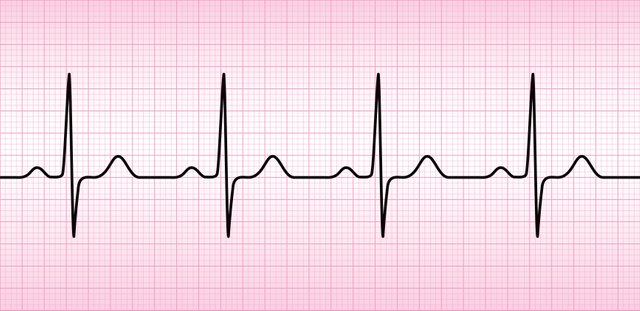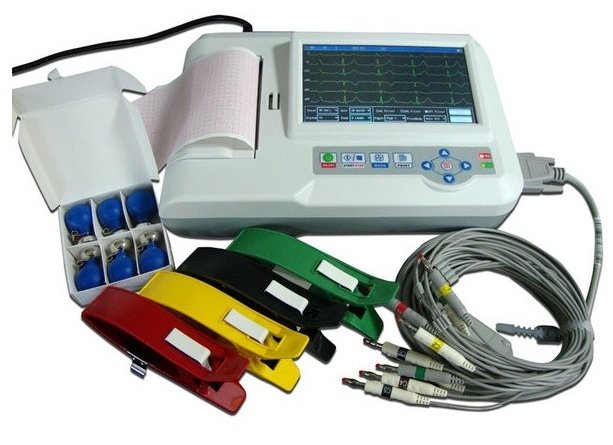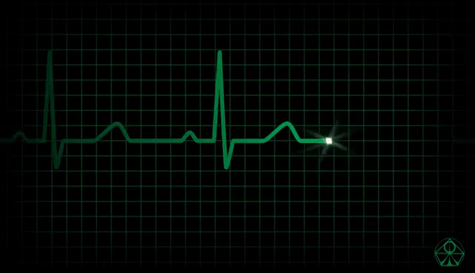
Source
An electrocardiogram (ECG or EKG) is a test that is performed in order to record the electrical activity of the heart, this is done by the electrocardiograph and allows get a large amount of information about the heart and how it works. Allowing to know details such as heart rate, function and size of cardiac cavities and cardiac muscle.
ECGs present a common drawn in healthy people, which when a change occurs allow determine if there is any problem or abnormality.
The functioning of the electrocardiogram is marked by the sinoatrial node, which is the structure of the heart that produces an electrical impulse and thus gives rise to a heartbeat, while maintaining a regular rhythm. The electrocardiogram is able to capture this electrical impulse and determine its trajectory, thus being able to determine if there is any anomaly that could cause an irregular heartbeat.
For the realization of the examination the electrodes are used, which are small patches with metal discs that are placed on the patient and will be a kind of sensors in charge of capturing the electrical impulses of the heart, the electrodes are connected to the electrocardiograph by means of wires, and in this way the impulses are captured and converted into a graphic representation of them, so that they can be evaluated by the doctor.

Source
The method of performing an electrocardiogram is a very simple process, which does not require much preparation or great cooperation on the part of the patient, it is only necessary for the patient to remain calm and relaxed and to remain immobile for approximately one minute, while the machine captures the necessary impulses. The ECG is completely harmless, since it does not send any kind of electricity through the body, and does not cause any kind of pain.
Electrocardiograms can be performed for various reasons, and allow to know a large amount of information. Used in most cases to:
• Determine or measure any anomaly in the heart
• Measure how quickly the heart beats and if it does normally
• Determine the effects of a drug or device used to control cardiac function (such as a pacemaker)
• Measure the size and position of the heart chambers
• Rule out heart failure
• Identify tachycardia
The accuracy of the electrocardiogram varies depending on the condition to be evaluated, since, in some cases, these are not reflected in the examination.
I hope you have learned something new today. If you liked or found it interesting, leave your upvote. Thank you
)

Congratulations! This post has been upvoted from the communal account, @minnowsupport, by danielvepa from the Minnow Support Project. It's a witness project run by aggroed, ausbitbank, teamsteem, theprophet0, someguy123, neoxian, followbtcnews, and netuoso. The goal is to help Steemit grow by supporting Minnows. Please find us at the Peace, Abundance, and Liberty Network (PALnet) Discord Channel. It's a completely public and open space to all members of the Steemit community who voluntarily choose to be there.
If you would like to delegate to the Minnow Support Project you can do so by clicking on the following links: 50SP, 100SP, 250SP, 500SP, 1000SP, 5000SP.
Be sure to leave at least 50SP undelegated on your account.
Downvoting a post can decrease pending rewards and make it less visible. Common reasons:
Submit